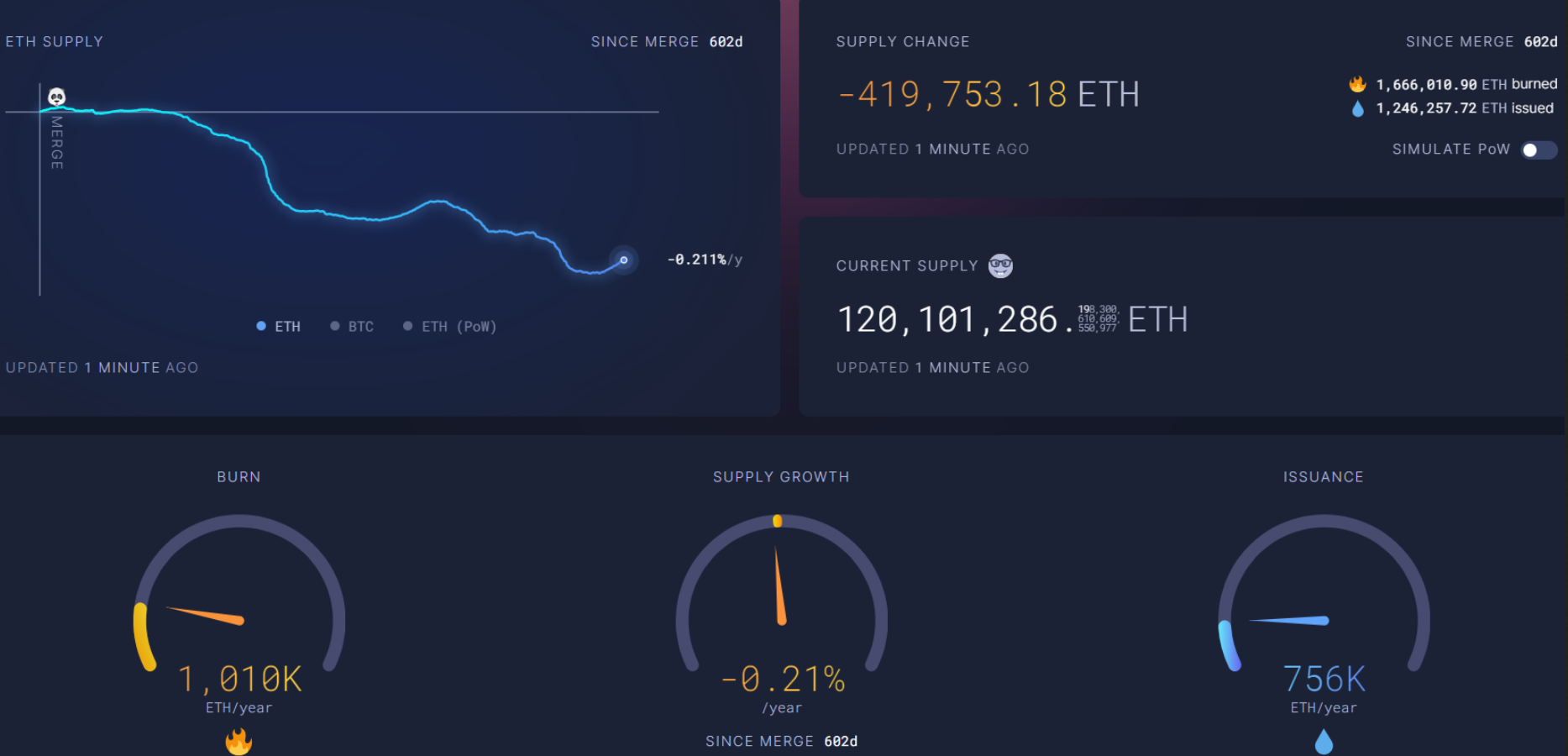Ethereum, being the largest altcoin by market value, is undeniably the most suitable blockchain to be the computer of the Web3 world. Most popular protocols operate on the Ethereum network. Moreover, it is an undeniable fact that in terms of user activity, number, quality, and segment, it is more valuable than alternatives. So where does the disappointment come in?
Ethereum and Inflation
Everyone was expecting the network to become deflationary with the elimination of miner rewards through the Merge. It did, and a massive amount of ETH supply was burned. At one point, the circulating supply even began to shrink. However, things changed with the Dencun upgrade. According to CryptoQuant data, the circulating supply, which was 120 million on March 12 before the Dencun upgrade, increased to 120.1 million two days after the mainnet update.
This may seem like a small increase at first glance, but it marks the beginning of the first inflationary period since the Merge transitioned Ethereum to the current proof-of-stake consensus model in September 2022. The founder and CEO of Cryptoquant said;
“After the Dencun upgrade, ETH broke away from the ‘ultrasound money’ narrative and lost its deflationary status with reduced fees. The strength of Ethereum lies in DApps; it would be wiser not to compare it with Bitcoin’s solid money narrative.”

Ethereum and Its Future
These days, Ether has many issues to contend with. There is almost a simultaneous legal operation launched against entities like the Ethereum Foundation, Uniswap, ConsenSys, and Robinhood. The SEC is clearly targeting the Ethereum ecosystem. On the other hand, while falling transaction fees are a positive development, they have brought back inflation.
According to the website Ultrasound/Money, since the Merge, over 419,713 Ether has been permanently removed from circulation. The Dencun update, by making median transaction fees four times cheaper at the same level of network activity, caused the burned fees to not cover the rewards, thus reversing the situation.
As a result, unless the volume of transactions on the network increases massively, Ethereum may continue to remain inflationary. However, if activity increases and Ethereum garners interest, a reasonable increase in supply may not be fatal for the price. The only problem now is that the deflation story will no longer motivate the bulls.


 Türkçe
Türkçe Español
Español









